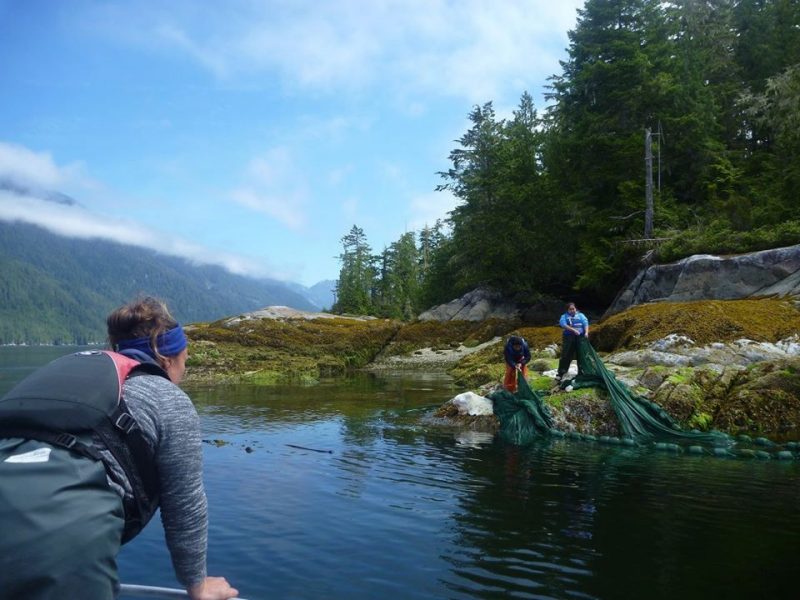Anti-fish farm activist’s numbers don’t add up
“Miraculous” salmon comeback is either an immaculate conception or a backfiring concoction
Commentary
By Fabian Dawson
SeaWestNews
Today’s world, driven by social media, is a breeding ground for those who want to create confusion, build falsehoods and propel polarisation.
‘I told you so postings’ are fabricated with selective recall, for a ‘post-truth’ narrative to trigger adulation from a blinkered following.
In these digital echo-chambers, the more you try to set the record straight with credible science, the more incredible the responses are.
But one element that can mute the uninformed rhetoric is numbers.
Because if you are not careful when trying to play with them, the numbers come back to bite you.
Which brings us to the case in point involving BC’s loudest anti-fish farm activist, Alexandra Morton and her recent Facebook post on the Broughton.
The Broughton Archipelago, on the northeastern flank of the Queen Charlotte Strait in British Columbia, is seeing an orderly transition of 17 fish farms, that will be completed by 2023.
Here is Morton’s head scratcher that was accompanied with a telling photo.
“On April 27, the crew at Salmon Coast Field Station found 5,000+ juvenile wild salmon at the site where a fish farm was just removed. We have not seen numbers like this here in years, and this signals both the power and resilience of wild salmon and that there is hope. The Broughton is a long way from recovering from 30 years of salmon farms, but this picture means that there is hope! This is nothing short of miraculous. I am in awe of the power of wild salmon to survive!”
Great news, except for one thing.
Morton’s observation about the numbers, extrapolated from a sample collected to detect sea lice prevalence, do not show a new post fish farm phenomenon.
They reflect actual scientific sampling of juvenile wild salmon for sea lice, that has been done in the vicinity of fish farms in previous years.
Morton’s assertion that “we have not seen numbers like this here in years” shows she is not looking hard enough, or maybe doesn’t want to. There is also no dataset to back her post.
According to publicly available stats in the Broughton Archipelago Wild Juvenile Salmonid Monitoring Program reports, data from sampling sets show the numbers to be in the thousands in previous years.
“Since I began sampling in the Broughton Archipelago in 2004 we see sets like this usually 2 or 3 times a year. Last year we had sets of 3700 and 1200,” was a comment in reply to Morton’s Facebook post – which was, as expected, largely ignored by her disciples.
Registered and professional biologists will tell you that strict protocols must be met at predetermined sites to ensure the sampling is consistent from year to year.
That means you shouldn’t go looking for large schools of fish to prove a point.
And they will also tell you that it’s no easy feat to count 5,000+ fish in one sample set which requires skill, experience and technique in order to reach an estimate both accurately and consistently.
Large numbers of out-migrating juvenile salmon in sample sets have been observed over the years in the area, especially after a freshet or a rush of fresh water, caused by heavy rains flowing into the sea. This helps push fish out of the streams and estuaries in large groups.
There was one of those on the weekend before April 27 – the date mentioned in Morton’s post.
Another aspect of Morton’s problematic post – This is nothing short of miraculous – is at best an immaculate conception, or at worst a backfiring concoction.
Any marine biologist, independent or otherwise, will know that the “5,000+ juvenile wild salmon at the site where a fish farm was just removed” must have had parents who swam by the aforementioned fish farm, twice, before it was shut down.
The central claim for the removal of fish farms in the Broughton was that the net pens posed an array of disease transmission risks to migrating wild stocks.
Given Morton’s new “miraculous” numbers, the proximity of aquaculture sites to salmon migratory routes, should be of no issue.
It also reinforces a similar recent finding in Atlantic Canada that wild salmon returning to their home rivers don’t show any increased rates of infection after passing net-pen aquaculture sites.
There is no doubting Morton’s passion for the iconic Canadian salmon.
But it does not have to come with half-truths to maim BC’s sustainable aquaculture industry that is central to Canada’s food supply chain.
(Facebook image shows juvenile salmon monitoring by members of the Salmon Coast Field Station society)

